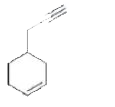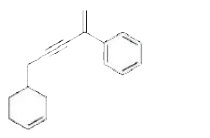Recommended Questions
- Consider the following statements and choose the correct option. . I...
04:52
|
Playing Now - Which of the following intermolecular force is vander Waals interactio...
01:49
|
Play - Derive an expression for force and torque acting on an electric field....
05:23
|
Play - An electron field of moment p is placed in a uniform electric field E....
Text Solution
|
Play - वैद्युत क्षेत्र vec(E) में vec(P) आघूर्ण वाले द्विध्रुव पर लगने वाला ब...
04:29
|
Play - कथन 1 : एकसमान विघुत-क्षेत्र में किस विघुत-द्विध्रव पर आरोपित नेट बल श...
06:12
|
Play - कथन : BF(3) अणु का परिणामी द्विध्रुव आघूर्ण शून्य होता है । क...
05:08
|
Play - A short electric dipole is placed in the electric field due to a point...
04:01
|
Play - A dipole of dipole moment vec(P) is placed in uniform electric field v...
04:26
|
Play


